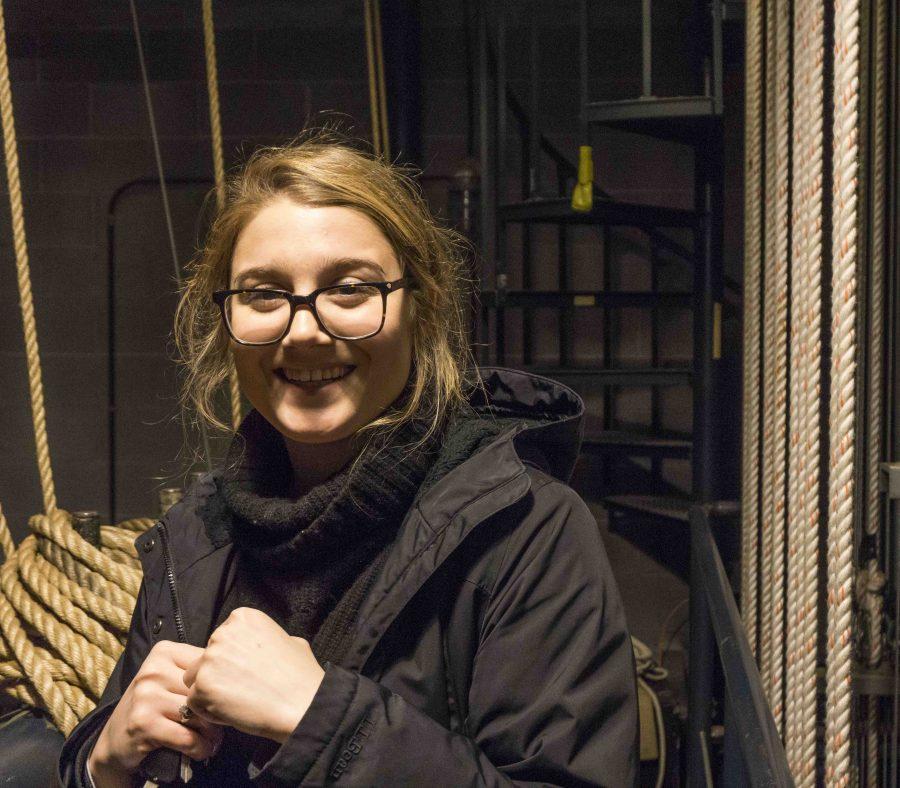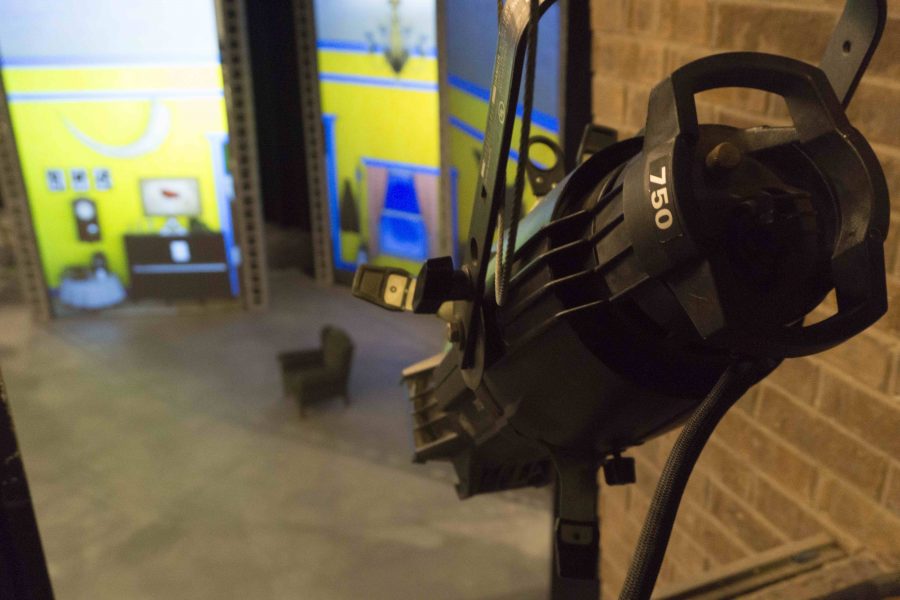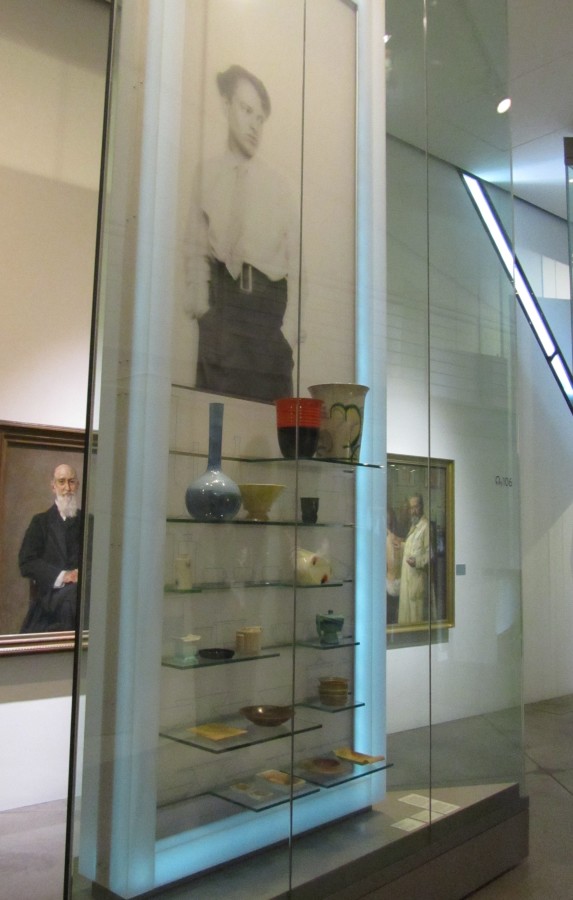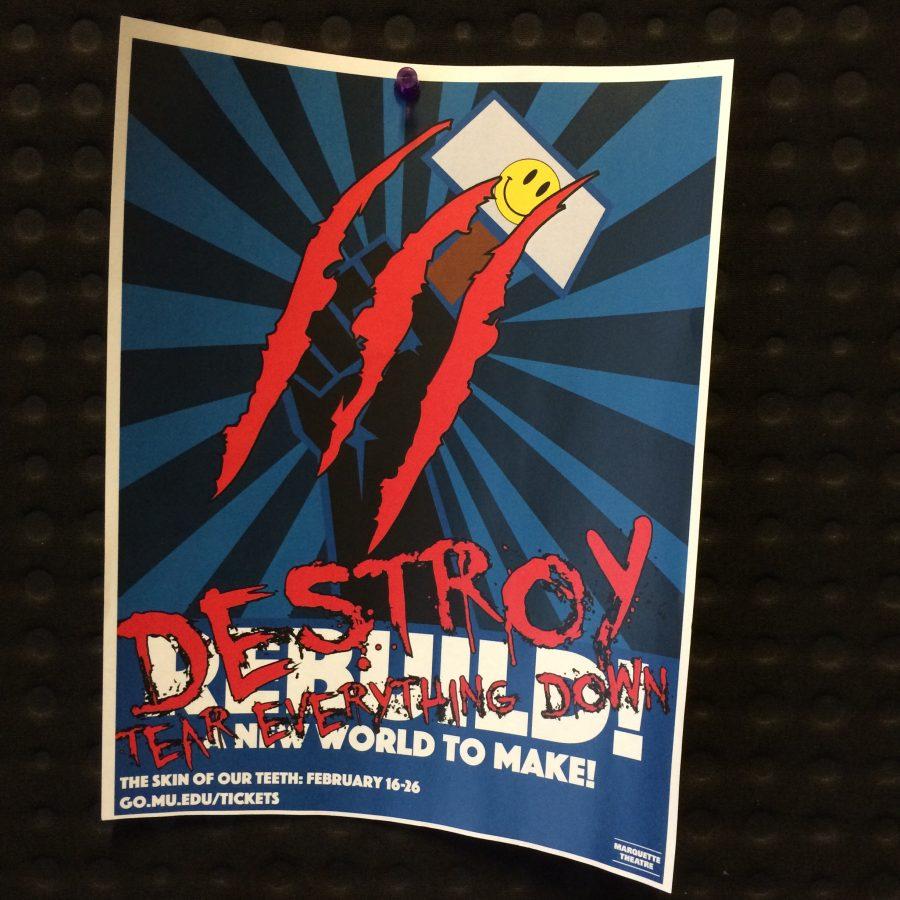The applause at the end of a Marquette Theatre show congratulates the actors’ and actresses’ hard work. But beyond a gesture to the booth, many playgoers fail to recognize the full extent of efforts from students off-stage who make shows possible.
Marquette Theatre finished performing Thornton Wilder’s “The Skin of Our Teeth” Feb 26. Stephen Hudson-Mairet, scenic designer and associate professor of theatre arts, oversaw the work that went into designing the backdrop for this show.
“We use Q-lab software, which displays one picture across three screens using a splitter,” Hudson-Mairet said.
An example of this is during the second act, when a man on a bike is seen on the digital screens in the background. The biker starts on screen one, and although they are not directly next to each other, the biker continues on to screens two and three and then out of sight, creating a realistic effect of movement.
Hudson-Mairet also noted that the designs for the second act were all created as pencil sketches and projected on screen.
While Hudson-Mairet played a tremendous role in the scenic design, he passed off most of the credit to the students, especially Julie Ahlgrim, a senior in the College of Communication.
“I did all the physical aspects, which required a lot of digital painting and tracking down furniture,” Ahlgrim said.
Ahlgrim, upon her mom’s request, took a sewing class which sparked her career in costume design. She climbed her way up after that and eventually found her knack for making shows run smoothly as a student production manager.
Ahlgrim still has a passion for costume design, as she described how the impressive mammoth costume was made for “The Skin of Our Teeth.”
“They started making it in early November. The work consisted of a lot of wire-cutting and bending as well as sewing lots of fur together,”Ahlgrim said. “This is definitely one of the biggest costume shows we have had in a long time.”
Rebecca Gardner, a sophomore in the College of Communication and a costume shop assistant, described her position as assistant designer.
“Working in the costume shop, I make, pull, shop, fit and adjust all the costumes for every show,” Gardner said.
Costume design is a team effort, as assistants must help with two shows before designing a show themselves. “The Skin of Our Teeth” was Gardner’s second assistant design show and she will be able to design on her own from now on.
Gardner stressed how important all aspects of off-screen theater are and “The Skin of Our Teeth” is a great example of where they came together to produce a successful show. Gardner described it as being “a true example of a well-done technical-heavy show.”
The area backstage is massive. There are several levels of catwalks where lights are hung and students are positioned to operate them. Much like the amount of students and the work they put in, the Helfaer Theatre is far larger than any playgoer could ever imagine.
As Ahlgrim said as she showed off the backstage areas, “Every theater has hidden gems that not everyone gets to see when they come to see a show. These are ours.”





